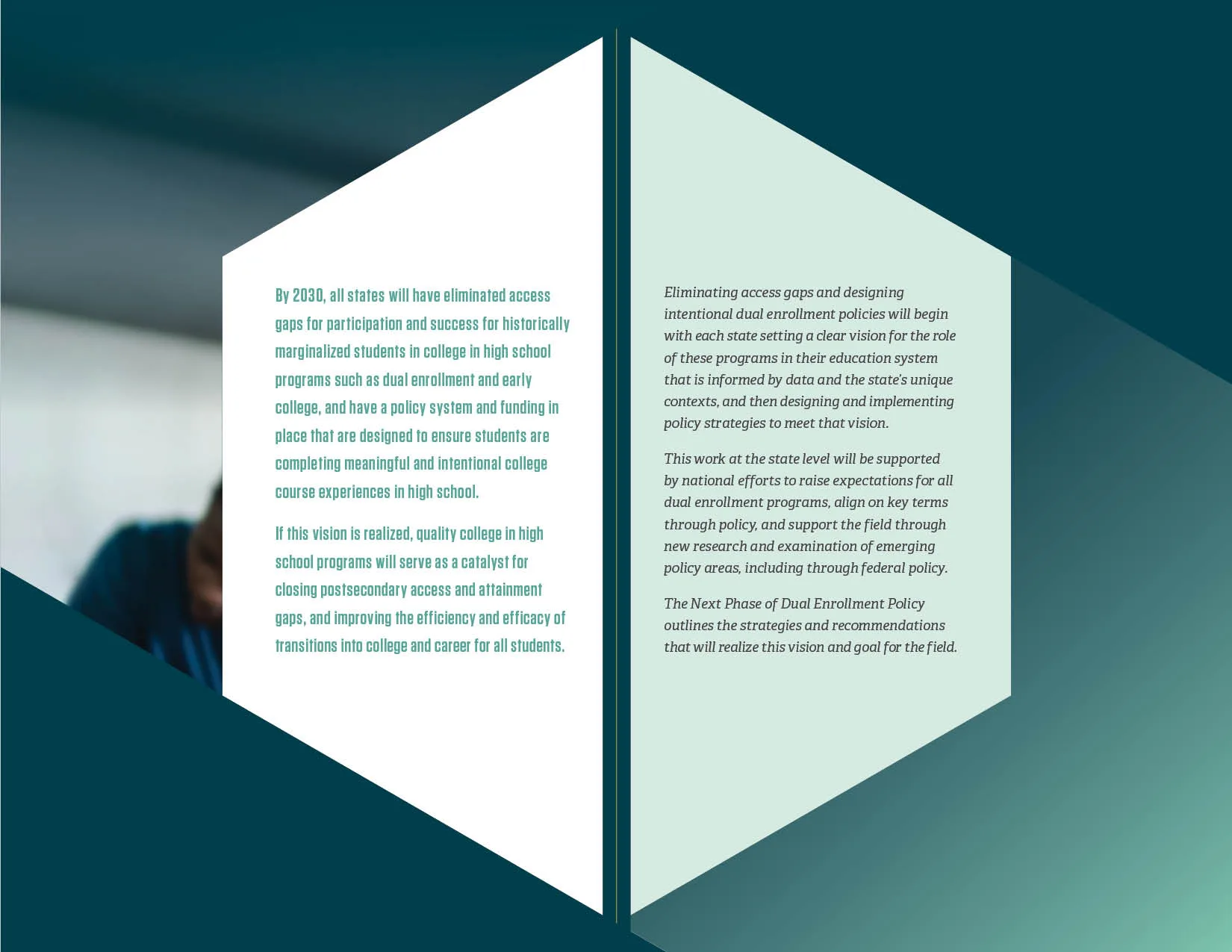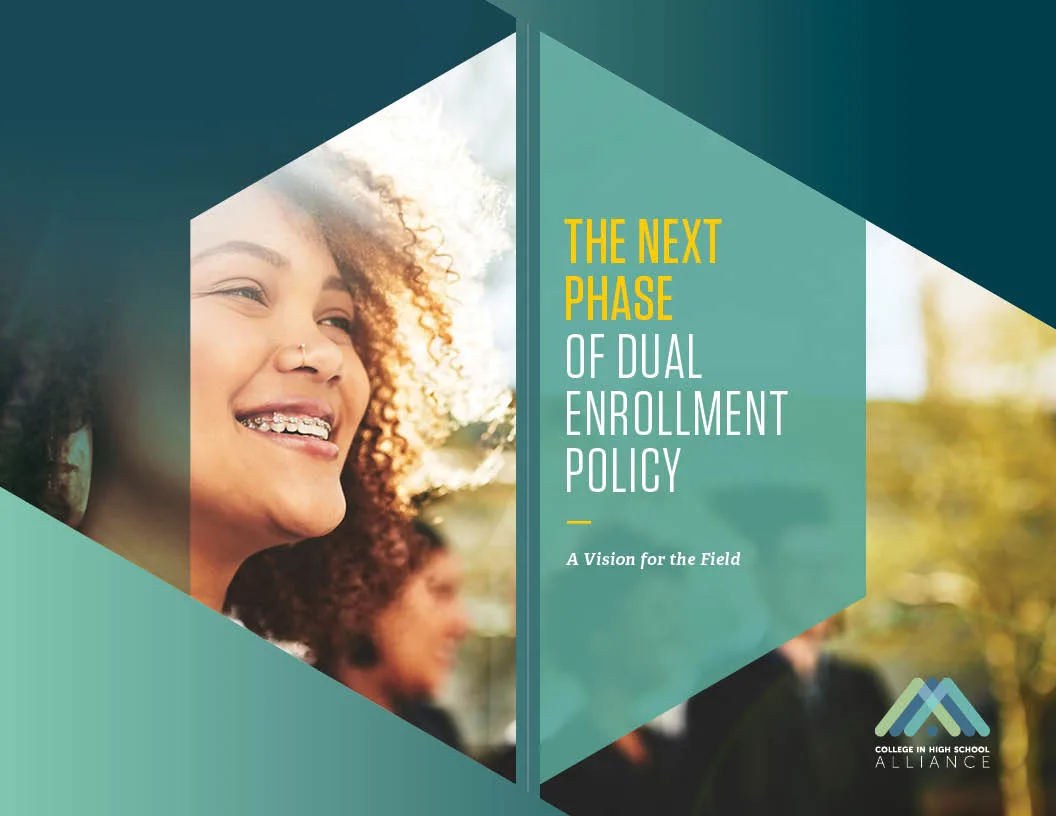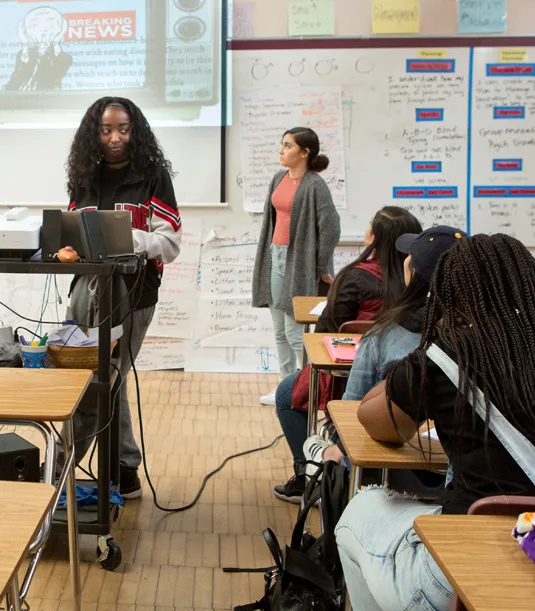The Next Phase of Dual Enrollment Policy: A Vision for the Field
November 2023
After two decades of significant growth in the number of high school students taking college courses, dual enrollment policy work has entered a new phase. The first phase of dual enrollment was characterized by proving the concept, getting a research base that determined whether the concept was worth scaling, and then with evidence of success in hand, significantly scaling up access to students.
What the next phase of dual enrollment policy work looks like is not set in stone, and it will take a concerted effort by policymakers, practitioners, and advocates to evolve the policy conversation and ensure continued support for the needs of students, high schools, colleges, states, and the nation. Policies and practices may need to change in order to better reflect dual enrollment as an integrated component of a state’s education system rather than a promising intervention available to very few. And a mindset shift will be necessary among policymakers and practitioners about this work, and what we are collectively trying to accomplish.
Over the last six years, the College in High School Alliance (CHSA) has supported the field of policymakers and practitioners in conceptualizing and supporting the implementation of policies to expand access to dual enrollment programs nationwide, grounded in the principles of improving equity of access, ensuring high-quality, and promoting student success. CHSA is now ready, based on all of the work done to date, to outline a framework for what the next phase of dual enrollment policy work should look like that is grounded in developing an understanding of how to maximize the value for students in participating in these course experiences and continue to strive to address equity gaps and overcome barriers so that all students can benefit from any experience that helps that student see the value of postsecondary education on their way to a career.
To that end, CHSA proposes the following vision to guide policy in this new phase of dual enrollment, to support student access and success, and to maximize the value of these programs for students, high schools, colleges, states, and the nation.

This is a vision for a new phase of dual enrollment policy that CHSA stands ready, alongside our national and state partners, to begin implementing to support student access, student success, and the further integration of our education systems in a way that serves students’ onward college and career journeys.
Access the paper
The Next Phase of Dual Enrollment Policy: A Vision for the Field
CHSA believes that to accomplish this vision there are three state and three national imperatives:
State Priorities:
- Setting a Statewide Vision for Dual Enrollment: Every state must have a vision and set a goal related to dual enrollment and its role in the state’s education system that is informed by the experiences and needs of students.
- Doubling Down on the Equity Mission: Nationally, we must expand the equity mission related to dual enrollment by continuing to work to close gaps for underrepresented groups like low income students or Black and Hispanic students, and to expand our work to include new student populations like students with disabilities, English language learners, and others.
- Focusing Policy on Intentional Dual Enrollment Experiences: States and programs must support making intentional and meaningful dual enrollment experiences available to students that are well integrated into the education system and aligned to the full breadth of locally relevant postsecondary pathways.
National Priorities:
- Setting a National Vision for Dual Enrollment by Raising Expectations for Policy Support: The dual enrollment field needs a national vision for dual enrollment that signals expectations for practitioners about what kind of program practices align with that vision and should be worthy of funding and policy support, which can be communicated through a new federal definition for dual enrollment.
- Aligning the Field on Key Terms in Policy: Dual enrollment policymakers at the national and state level need to begin to align, starting with terminology and definitions used in policy, in order to make it easier for students, parents, and other stakeholders to get the information they need about program access.
- Examine New and Emerging Policy Trends: The field also needs to do a deeper examination of new and emerging policy trends that may support or hamper progress toward the other elements of realizing this framework, with a particular emphasis on their impact on equity.


